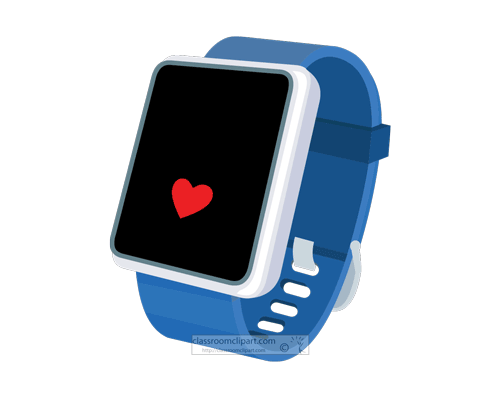How the Heart and Lungs Work Together: Oxygen, Blood, and Every Breath You Take
Learn how the heart and lungs team up to circulate oxygen and remove waste in this detailed article for students. Discover how breathing and blood flow work together. Includes vocabulary, quiz, and kid-friendly summary.
🫁❤️ How the Heart and Lungs Work Together: Oxygen, Blood, and Every Breath You Take
Every second you’re alive, two powerful organs—your heart and lungs—are working together to keep you going. With every breath you take and every beat of your heart, your body is collecting oxygen and sending it to the places that need it most. These two systems, the respiratory system (lungs) and the circulatory system (heart and blood vessels), are closely connected. Without this teamwork, your cells wouldn’t get the oxygen they need, and you couldn’t survive.
Let’s take a closer look at how the heart and lungs form a life-saving partnership with every breath and beat.
🫁 How the Lungs Bring In Oxygen
Your lungs are like giant air balloons inside your chest. When you breathe in, air travels through your nose or mouth, down your trachea (windpipe), and into two bronchi, which lead to each lung. Inside the lungs, the air spreads into smaller and smaller tubes until it reaches tiny air sacs called alveoli.
There are millions of alveoli in your lungs. Each one is surrounded by a network of tiny blood vessels called capillaries. This is where the real magic happens: oxygen from the air passes through the alveoli walls and enters your blood. At the same time, carbon dioxide, the waste gas made by your body, moves from the blood into the alveoli. When you exhale, that carbon dioxide leaves your body.
❤️ How the Heart Pumps the Blood
Now that your blood has picked up oxygen in the lungs, it needs to travel to your body. That’s where the heart takes over.
The heart has four chambers, and the left side is in charge of pumping oxygen-rich blood to the body. The oxygen travels through arteries, reaches all your cells, and is exchanged for carbon dioxide in the capillaries. Then, the right side of your heart collects the oxygen-poor blood and sends it back to the lungs through the pulmonary arteries so it can pick up oxygen again.
This constant cycle is called pulmonary circulation, and it happens over and over, about once every minute.
🔁 How the Heart and Lungs Work Together
The heart and lungs work as a team in a loop:
- You inhale air into your lungs.
- Oxygen enters the blood in the alveoli.
- The heart’s left side pumps this oxygen-rich blood to the body.
- Cells take the oxygen and give back carbon dioxide.
- The heart’s right side pumps the oxygen-poor blood back to the lungs.
- You exhale the carbon dioxide.
- The process starts again!
This teamwork is so smooth that you don’t even have to think about it. It happens while you read, sleep, walk, and even dream.
🏃♂️ What Happens During Exercise?
When you run, jump, or play, your muscles need more oxygen. Your lungs breathe faster to take in more air, and your heart beats quicker to deliver oxygen-rich blood. This is why your pulse and breathing speed up when you’re active.
With regular exercise:
- Your lungs become more efficient at getting oxygen
- Your heart grows stronger and pumps more blood with each beat
- Your circulation improves, helping you stay healthy and energized
Exercise helps your heart and lungs become an even better team!
🎉 Fun Facts About the Heart-Lung Team
- Your lungs contain over 300 million alveoli—that’s like a tennis court’s worth of surface area!
- The heart and lungs respond instantly to your needs—whether you’re resting or sprinting
- You breathe about 20,000 times a day
- Your heart pumps oxygen-rich blood to 100 trillion cells
- During exercise, your oxygen use can increase by 10 times or more
🧠 Vocabulary
- Lungs – Organs that bring oxygen into the body and remove carbon dioxide
- Trachea – The windpipe that carries air to the lungs
- Bronchi – Tubes that branch from the trachea into each lung
- Alveoli – Tiny air sacs in the lungs where gas exchange happens
- Capillaries – Small blood vessels around alveoli and cells
- Pulmonary circulation – Blood flow between the heart and lungs
- Oxygen-rich blood – Blood carrying fresh oxygen from the lungs
- Oxygen-poor blood – Blood carrying carbon dioxide back to the lungs
- Inhale – To breathe in
- Exhale – To breathe out
✅ Interactive Quiz: Test Your Heart-Lung Knowledge!
1. What do the lungs bring into the body?
A. Carbon dioxide
B. Oxygen
C. Water
D. Blood
2. What are alveoli?
A. Bones in the lungs
B. Small muscles
C. Tiny air sacs where gas exchange happens
D. Blood cells
3. What side of the heart pumps blood to the body?
A. Left
B. Right
C. Top
D. Back
4. What happens when you exhale?
A. You take in oxygen
B. Your heart stops
C. Carbon dioxide leaves your body
D. Blood flows backward
5. What happens to your heart and lungs during exercise?
A. They slow down
B. They stop
C. They work faster
D. They shrink
6. What does the pulmonary artery do?
A. Takes blood to the brain
B. Carries oxygen-rich blood to muscles
C. Carries oxygen-poor blood to the lungs
D. Delivers nutrients to bones
7. How often does this heart-lung loop happen?
A. Once a day
B. Once every minute
C. Once a week
D. Only when sleeping
🧒 Kid-Friendly Summary
Your heart and lungs are the ultimate team! Your lungs take in fresh oxygen, and your heart sends it around your body. Then your blood picks up waste and brings it back to the lungs to be breathed out. They do this all day, every day—keeping you alive, strong, and ready for anything!



















































